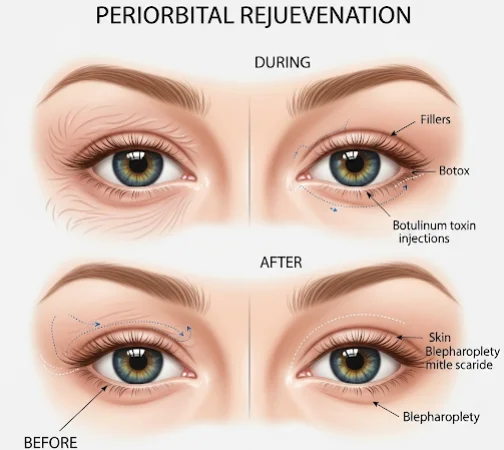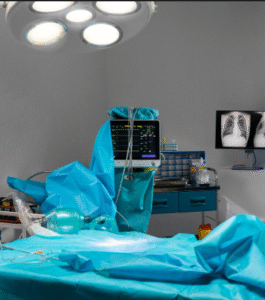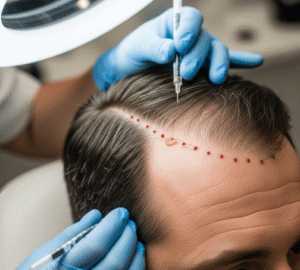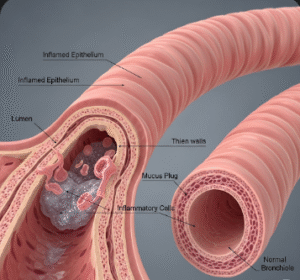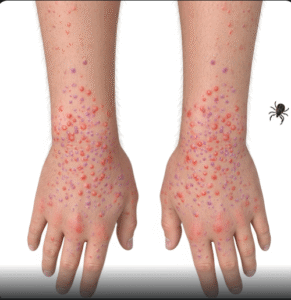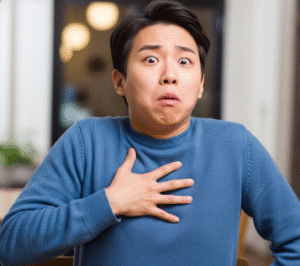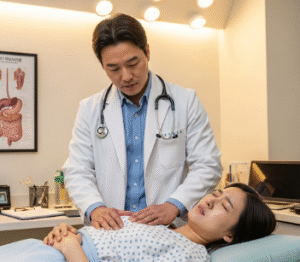➤ What it is
Periorbital rejuvenation refers to the set of treatments designed to restore youthfulness, brightness, and firmness to the eye area — the skin around the eyes, upper and lower eyelids, and adjacent regions.
The periorbital region is one of the first areas to show aging due to:
- Thin skin that loses elasticity quickly,
- Volume loss in underlying fat pads,
- Fine lines and wrinkles from repetitive facial movements,
- Dark circles caused by pigmentation, vascular changes, or hollowing,
- Puffiness or eye bags from fat herniation or fluid retention.
Periorbital rejuvenation in Korea combines advanced non-surgical and surgical dermatology treatments with cosmetic innovations from the K-beauty industry, making it one of the most popular and advanced forms of anti-aging care.
➤ Why it’s done
Periorbital rejuvenation is performed for both medical and cosmetic reasons:
- Reducing Wrinkles and Fine Lines → smooths crow’s feet and under-eye creases.
- Correcting Dark Circles → improves pigmentation and vascular shadows.
- Restoring Volume → fills hollows and reduces tired appearance.
- Tightening Loose Skin → addresses sagging upper and lower eyelids.
- Improving Confidence → refreshed appearance enhances social and professional presence.
- Cultural Context in Korea → large, bright, youthful-looking eyes are highly valued, making periorbital care a cornerstone of Korean aesthetic dermatology.
➤ Alternatives
Different treatment options exist for periorbital rejuvenation:
Non-Surgical Treatments
- Botulinum toxin (Botox) → relaxes crow’s feet wrinkles.
- Dermal fillers (hyaluronic acid) → corrects under-eye hollows and tear trough deformities.
- Skin boosters (PN, PDRN, polynucleotides, or exosome therapy) → improve hydration and repair.
- Chemical peels (mild formulations) → improve pigmentation and texture.
- Microneedling with PRP (platelet-rich plasma) → stimulates collagen and rejuvenates skin.
Laser and Energy-Based Devices
- Fractional CO₂ laser → resurfaces fine lines and stimulates collagen.
- Nd:YAG and IPL lasers → reduce pigmentation and vascular dark circles.
- Radiofrequency (RF) microneedling → tightens skin and reduces crepiness.
- Ultrasound therapy (HIFU) → lifts sagging eyelid skin.
Surgical Approaches (Blepharoplasty)
- Lower eyelid surgery → removes or repositions fat pads.
- Upper eyelid surgery → tightens sagging skin and improves eye openness.
- More common in moderate-to-severe cases.
Korean Dermatology Alternatives
- Hydration facials around the eyes with hyaluronic acid.
- LED therapy (red and near-infrared) for healing and anti-aging.
- Brightening cosmeceuticals specifically formulated for the eye area.
➤ Preparation
Preparation ensures optimal results and safety:
- Medical Consultation
- Dermatologist or plastic surgeon evaluates skin type, degree of aging, and specific concerns (wrinkles, pigmentation, hollowness).
- Discussion of treatment goals and realistic outcomes.
- Pre-Treatment Care
- Stop using harsh exfoliants or retinoids around the eye for 1–2 weeks.
- Ensure skin is well hydrated.
- Avoid aspirin or blood thinners before injectable treatments to reduce bruising risk.
- Korean Clinic Preparation
- Digital facial analysis is often performed to assess skin tone, texture, and volume loss.
- Cooling masks or hydrating patches may be applied before treatment.
➤ How it’s Done
Periorbital rejuvenation in Korea is typically customized to the individual, often combining therapies:
1. Injectable Treatments
- Botox for crow’s feet → small doses injected into orbicularis oculi muscles.
- Fillers for tear troughs → hyaluronic acid fillers restore volume and smooth hollowing.
- Skin boosters & PRP → microinjections improve elasticity and hydration.
2. Laser & Device-Based Treatments
- Fractional CO₂ laser → resurfaces fine lines.
- IPL / Nd:YAG → targets pigmentation and vascular shadows.
- RF microneedling → improves laxity and fine wrinkles.
- HIFU → tightens sagging eyelid skin.
3. Surgical Procedures (if needed)
- Upper blepharoplasty → removes excess eyelid skin, improving eye definition.
- Lower blepharoplasty → repositions or removes fat pads to reduce eye bags.
- Minimally invasive Korean techniques focus on scarless or hidden incisions.
4. Korean Dermatology Additions
- LED light therapy post-procedure to reduce swelling.
- Hydration facials with brightening serums for the under-eye area.
- Cosmetic camouflage creams during recovery.
5. Maintenance Programs
- Korean clinics often recommend skincare regimens with eye creams, serums, and sun protection to prolong results.
➤ Recovery
Recovery depends on treatment type:
- Injectables → mild swelling or bruising, recovery in 1–3 days.
- Lasers and RF → redness for 2–5 days, gradual collagen improvement over weeks.
- HIFU → mild tenderness, no downtime.
- Surgery → swelling and bruising for 1–2 weeks, full recovery in 4–6 weeks.
Aftercare Instructions:
- Use cold compresses to reduce swelling.
- Apply dermatologist-recommended eye creams.
- Avoid rubbing the eyes or applying heavy makeup for several days.
- Use sunscreen to prevent pigmentation.
Korean Recovery Practices:
- Hydrogel eye masks and soothing patches offered post-treatment.
- Scar-prevention creams and pigmentation facials after surgical procedures.
- Regular follow-ups with imaging to track skin improvement.
➤ Complications
Possible complications vary depending on treatment:
- Injectables → bruising, swelling, or rare vascular complications.
- Lasers → temporary redness, pigmentation changes if unprotected.
- RF/HIFU → mild discomfort, rare skin burns if improperly performed.
- Surgery → asymmetry, scarring, or prolonged swelling.
Korean clinics minimize risks through:
- Precision dosing for Botox and fillers.
- Advanced laser devices with cooling systems.
- Scar-minimizing surgical techniques.
- Combination with skincare programs for safe healing.
➤ Treatment Options in Korea
Korea is one of the global leaders in periorbital rejuvenation, offering world-class options:
Why Korea excels:
- Cutting-edge devices (CO₂ lasers, RF microneedling, HIFU).
- Expertise in injectables → natural results highly valued.
- Integration of skincare and cosmetic dermatology.
- Holistic approach → addressing lifestyle, stress, and long-term maintenance.
Unique Korean Practices:
- “Eye spa programs” → hydrating facials, cooling masks, and LED treatments.
- Combination therapies (e.g., filler + laser + skin booster).
- Pigmentation correction facials for dark circles.
- Medical tourism packages for international patients seeking non-surgical rejuvenation.
✨ Final Thoughts
Periorbital Rejuvenation in Korea represents the fusion of advanced medical dermatology and K-beauty aesthetics. With a full range of injectables, laser therapies, skin boosters, RF/HIFU, and surgical techniques, patients can achieve a refreshed, youthful, and natural look.
Korean dermatologists place equal emphasis on medical safety, cosmetic harmony, and patient satisfaction, ensuring treatments are tailored to each individual’s needs.
This dual focus on science and beauty makes Korea a global leader in periorbital rejuvenation, offering results that are both effective and aesthetically refined.

